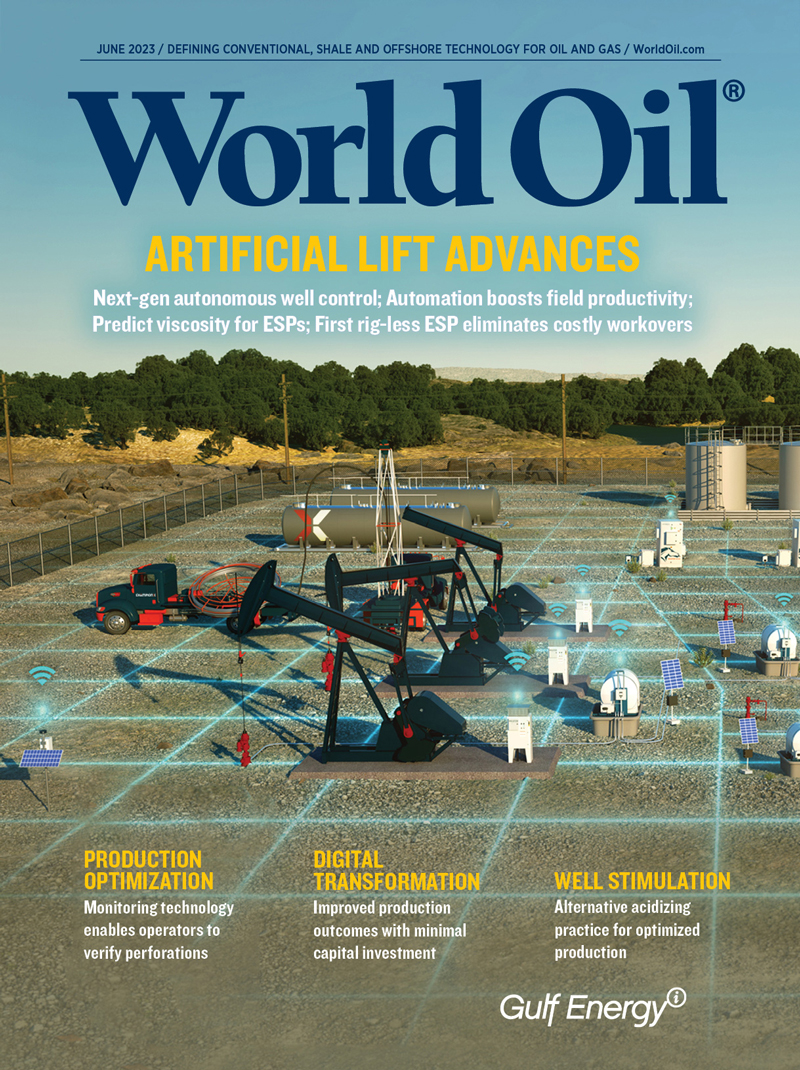Issue: June 2023
Special Focus: Artificial Lift Advances
State-of-the-art automation and optimization are being honed by continuous advancements in digital sensors, remote terminal units for wellsite control and physics-based diagnostics software. The next evolutionary step is fully autonomous well control, demonstrated by an initial pilot project on a group of 100 rod lift wells.
By leveraging digitalization at scale to transform field production, the industry can reduce cost and carbon intensity per barrel produced while extracting maximum value from existing resources.
Electrical submersible pumping is a proven artificial lift solution for extending production life. However, conventional ESP systems often result in costly workovers and production downtime. By eliminating the need for a rig after initial installation of the permanent completion, operators can reduce costs, carbon footprint and mobilization time, while minimizing deferred oil production.
Using normalized, dimensionless numbers, electric submersible pump performance can be calculated from the water performance at any viscosity and speed. A patented method accurately predicts the pump viscosity correction factors, including flow, head and horsepower, within 5% in the operating range of the pump from the water performance.
Features
Operators can gain actionable insight into downhole operations, utilizing an innovative, non-intrusive monitoring system.
In all economic conditions, advanced analytics solutions help companies increase operational and business efficiency, empowering their people to get more out of existing assets.
With her own firm riding the momentum of two recent OTC Spotlight on Technology winners, Cindy Taylor sees a solid period of business, not only for Oil States International, but for the OFS sector in general.
Despite the disappointment caused by Equinor’s decision to postpone the Bay du Nord project, there is much to be optimistic about regarding the province’s offshore activity, says this key player in the region’s industry.
While wellbore acidizing has been used for over 100 years to stimulate wells and expand production life, technique improvements have extended the process’ life in parallel. Organic acids have been introduced into wellbore stimulation processes because their delayed reaction capability decreases corrosion rates of steel components and improves well productivity.
Many practices and technologies used in the offshore oil industry can be adapted to facilitate a timely, economically feasible energy transition. One example is transforming riserless casing drilling technology into a subsea anchoring system, which decreases the cost of offshore wind electricity by minimizing capital expenses.
Columns
Musings on electricity, URTeC, supply issues and more
Injection
Saudi Arabia's choices
Decarbonization is woke?
Vibrant UK O&G sector is a pre-requisite for deliverable, affordable energy transition
Offshore Norge: The long game
Resources
Crude prices fell in May despite a 1.16-MMbopd reduction by OPEC+ in April, and a 503,000-bopd cut by Saudi Arabia and Russia in May.



